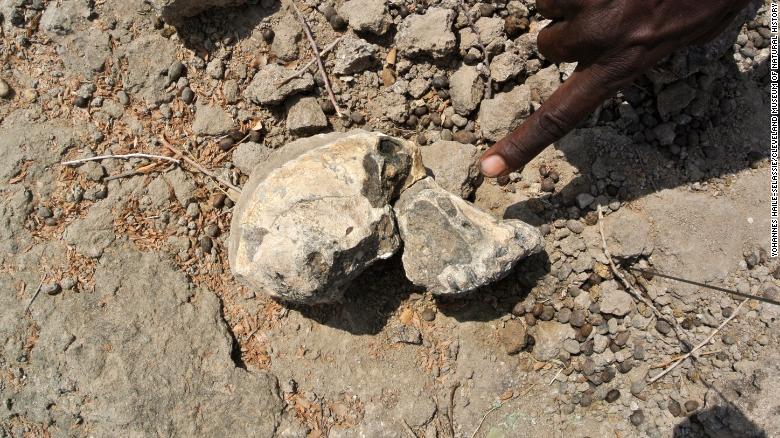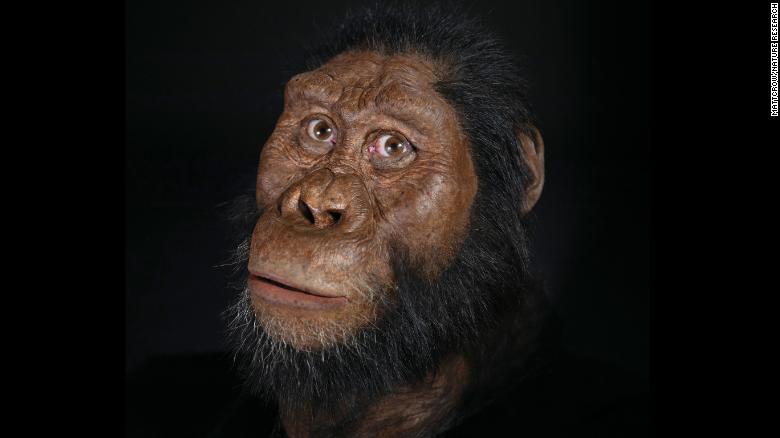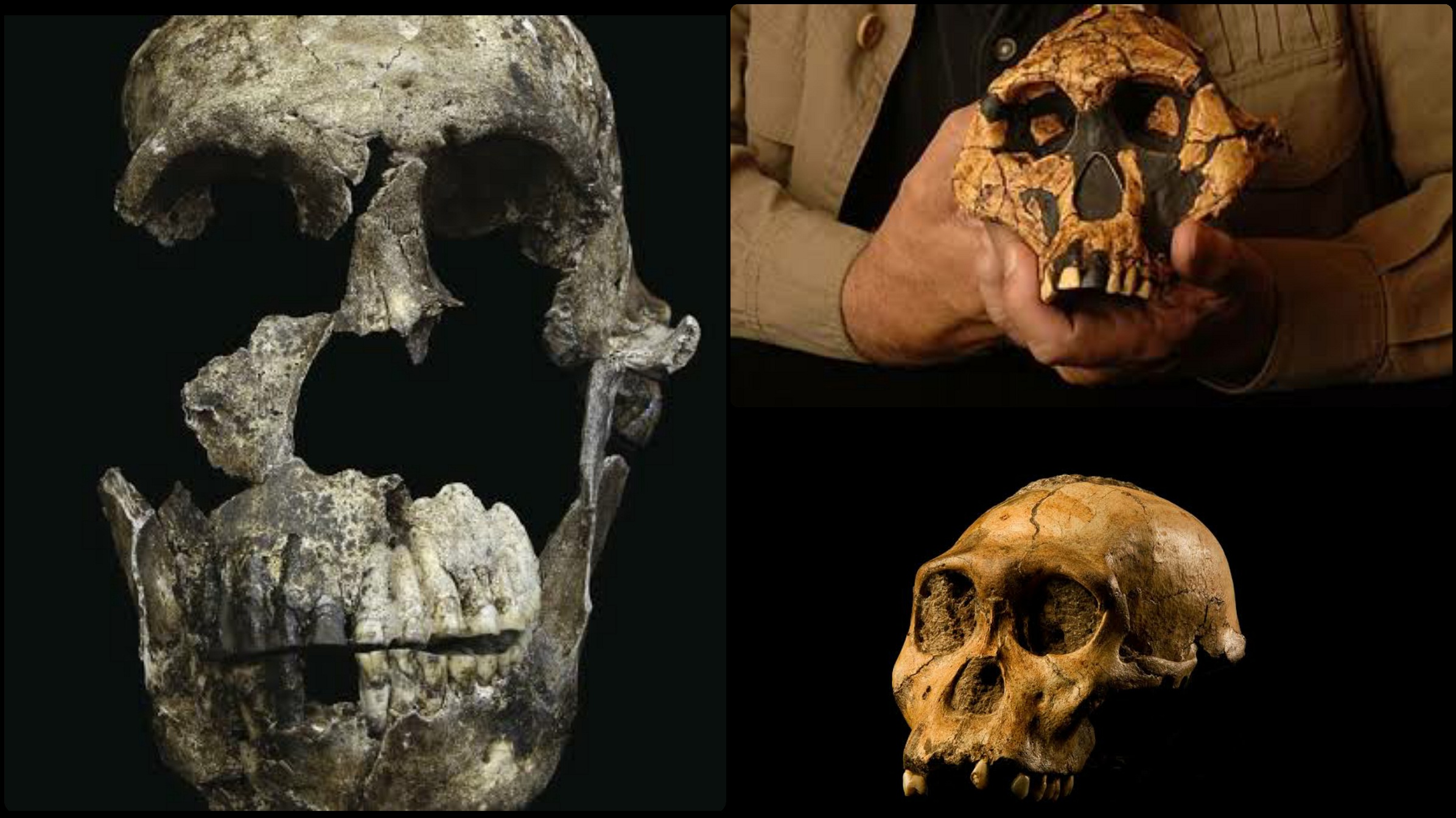In a ground-breaking archaeological finding, scientists performing on the Woranso-Mille Paleoanthropological scientific research study within the Afar Regional State of Ethiopia have discovered a “remarkably complete” skull said to belong to a skeleton of early pre-human that lived about 3.8 million years ago.
The discovery of the skull belonging to Australopithecus anamensis brings such a lot of insight into the evolutionary history of humankind’s ancestors.
Researchers, who are performing on the project for 15 years discovered an upper jawbone of the prehistoric man on February 16, 2016. This led to a 16-hour area-wide search, uncovering dozens of other fossilized pieces of the remainder of the skull.
A well detailed and comprehensive analysis of the skull and, therefore, the location it had been unearthed has since been published within the journal Nature.
Describing his initial reaction upon unearthing the rare remains, Yohannes Haile-Selassie, study author and curator of anthropology at the Cleveland Museum of explanation, had this to say: “I couldn’t believe my eyes once I spotted the remains of the skull. It had been a eureka moment and a dream come true. This is often one among the foremost significant specimens we’ve found thus far from the site”.
Referred to as MRD, the prehistoric skull symbolizes the first human ancestor commonly referred to as Australopithecus Anamensis, believed to possess walked the world between 3.9 and 4.2 million years ago. They preceded Australopithecus afarensis, to which the well-known Lucy skeleton belonged, and is believed to possess given rise to our genus, Homo.

Just 34 miles north of where the Lucy skeleton was discovered in 1974, MRD was found by a team of international geologists, paleobotanists, and paleoanthropologists. Its age decided by a study of the encompassing habitat where it had been found.
The skull was washed down a river after death and was buried by sedimentary soil during a delta. Scientists are of the opinion that the discovered skull likely belonged to a male and were presumably living along the river, surrounded by dense trees. the broader area which was made from large fields was open shrubland.
According to the University of Michigan lecturer and co-author of the study, Naomi Levin, “MRD lived near an outsized lake during a dry region. We want to conduct more add these deposits to know the environment of the MRD specimen, the connection to global climate change and the way it affected human evolution, if at all”.
Contrary to the previous belief that Anamensis died off and gave rise to afarensis, the skull discovery indicated that the two species likely overlapped and lived side by side for a minimum of 100,000 years. This is often an immediate challenge to the established notion that human ancestors evolved during a straight linear fashion.
More Knowledge about Anamnesis
Stunned by this rare discovery, the stunned researchers found themselves starring down at a face they need never seen before. They carefully cataloged the features of the skull so that it might be compared with other known human species from eastern and southern Africa.
According to Stephanie Melillo, study co-author and post-doctoral researcher at the Planck Institute for Evolutionary Anthropology, Australopiths was known mainly for his or her massive physiognomy.
However, an evolution towards a more modern human facial feature started with the origin of our genus, Homo. That began when early man was using essential underdeveloped tools and feeding on processed food.
 Considered the oldest known member of the Australopithecus genus, anamensis is formed from a motley collection of intriguing features. For one, it’s a protruding face where the cheekbones project forward. This, scientists believe, was borne out of its got to process strict diets and chew hard food. Thus, the facial bones evolved to face up to stress.
Considered the oldest known member of the Australopithecus genus, anamensis is formed from a motley collection of intriguing features. For one, it’s a protruding face where the cheekbones project forward. This, scientists believe, was borne out of its got to process strict diets and chew hard food. Thus, the facial bones evolved to face up to stress.
The braincase is long and narrow, a bit like those of other early human ancestors, and scientists are still trying to unravel what caused a rise in brain capacity when the genus, Homo, came into existence. A possible reason, consistent with Haile-Selassie, is that Homo used more tools, ate more meat, and went around within the open more, resulting in more decision-making.

A Key Evolutionary Insight
Identifying Anamnesis is vital in allowing researchers to know how early man evolved. While comparing the features of the MRD skull to a 3.9million-year-old skull fragment that had not been assigned to any known species, the researchers are ready to build a profile of what anamensis seemed like.
This makes it easy to spot the Belohdelie frontal as afarensis, which belongs to Lucy’s species. This confirms that the two species actually lived side by side for a minimum of 100,000 years.
It’s now up for debate whether the population actually did misunderstanding. But in the meantime, the researchers are wanting to specialize in learning more about how early man evolved.
Time and time again, archaeological findings show that Africa is that the cradle of humankind – where we all came from. During a world where history and truth are twisted, mother nature, and therefore, the earth gives us hints and proofs on who was the original/first humans.
Following these discoveries are the indisputable truth that the traditional civilizations of this world are all of the Black origin – anyone who reports the contrary is merely hiding behind the term “historian” to usurp Black history and heritage.
The teaching of the history of this Nature in African and African-American schools/communities is of paramount importance if the Black race must reclaim its place within the commonwealth of humans.

